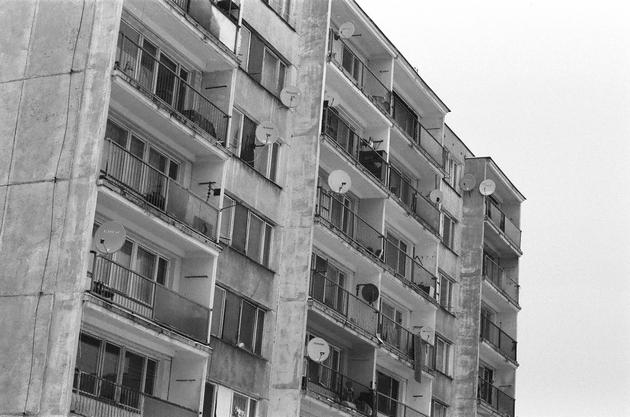Czech Republic: Worst building at Chanov housing estate to be demolished

A building at
the Chanov housing estate in the Czech town of Most known as Block 12 is
scheduled for demolition. The town first considered leaving the ground floor of
the building intact and reconstructing it so social services could be
headquartered there, but has since abandoned that plan.
The town hall has given two reasons for the demolition. "In
the end we decided on a total demolition. We are covering it completely from the municipal budget because the sight of that building when people drive into town is
embarrassing,” said Deputy Mayor Hana Jeníčková.
"Removing
just part of the building would cost much more than demolishing it. To do so, we would have
been drawing on EU money, which means we would have had to artificially invent a
use for it,” said Mayor Vlastimil Vozka. Social services in the locality are currently
provided by field social workers and the Chanov Community Center (Komunitní
centrum Chanov).
Block 8 at Chanov
has been completely repaired and now offers 26 social apartments instead of the
24 old ones. Repairs are continuing to other buildings on the estate and the town hall is not
planning any other demolitions there. The local government successfully applied for tens of
millions of crowns from the EU for the repairs.
The socially
excluded locality of Chanov came into existence during the 1970s. Romani people
from many different parts of the former Czechoslovakia were moved into 12
prefabricated buildings there, creating a ghetto. The town leadership prefers to use the
term “zone of deprivation”, which was also used in a study of such excluded
localities published by Czech sociologist Ivan Gabal in 2006.
Unemployment is problem number one
The biggest
problem afflicting the housing estate in Most is unemployment. Approximately 85
% of its residents are jobless, according to Martin Nebesář, the director of the Romani Culture
House (Dům romské kultury), which offers local people
re-qualification courses and opportunities for recreation.
Mayor Vozka (“Mosters
for Most” – Mostečané Mostu) says he believes Chanov is not as problematic a locality
as it once was. "Chanov is
not currently generating any problems. There is a concentration of citizens
there who don’t all abide by the rules, who don’t all pay their rent properly,
etc., but we have similar citizens in the rest of town as well, and they are
not only of Romani ethnicity. This is a big problem, because currently the
citizens are becoming rapidly impoverished and we have the phenomenon of people
defaulting on their electricity payments, their rent and their services,” Vozka said.
According to Nebesář,
the situation in Chanov has not changed much in the last few years. In his
view, the problems the public once knew of only from the housing estate have
spread to other places recently.
"Chanov
was previously the only socially excluded locality. The other localities were
not as well-known. Then Matiční street [in Ústí nad Labem] and many others came
to light. I’d say they’ve overshadowed Chanov a bit,” Nebesář opined.
Nebesář
believes Chanov’s reputation is much worse than its reality. "The biggest
problem here is definitely unemployment. People would like to work, but they can’t
find jobs,” he said, estimating that of the roughly 1 000 residents of the
housing estate, about 85 % are unemployed.
"We have
been running educational activities for the local unemployed for 10 years
already. We prepare them to enter the labor market. During that time we have
run roughly 30 re-qualification courses for locals. About one-third of our
graduates succeed in finding a place on the labor market,” Nebesář said. In his
view, the problem is that it is generally difficult to find work in the Most
region, and very often employers scorn the idea of hiring Romani people.
Local Romani
residents also confirm there is high unemployment in Chanov. "I don’t have
a job – they won’t even hire Romani people here. No one here has work,”
complained Martin Danihel, a Chanov resident. Danihel is dissatisfied with his
life at the housing estate and dislikes the atmosphere there.
Monika Balogová,
on the other hand, is a young resident who is satisfied with life at the
housing estate. She uses the services of the Romani Culture House, where locals
can play ping-pong and pool, use the internet, or work out in the gym.
"I go
there often to play ping-pong. I like it in Chanov, mainly for the Romani
culture. I think it’s improved – I’ve lived here 20 years already. They’re
getting it together,” Balogová said.